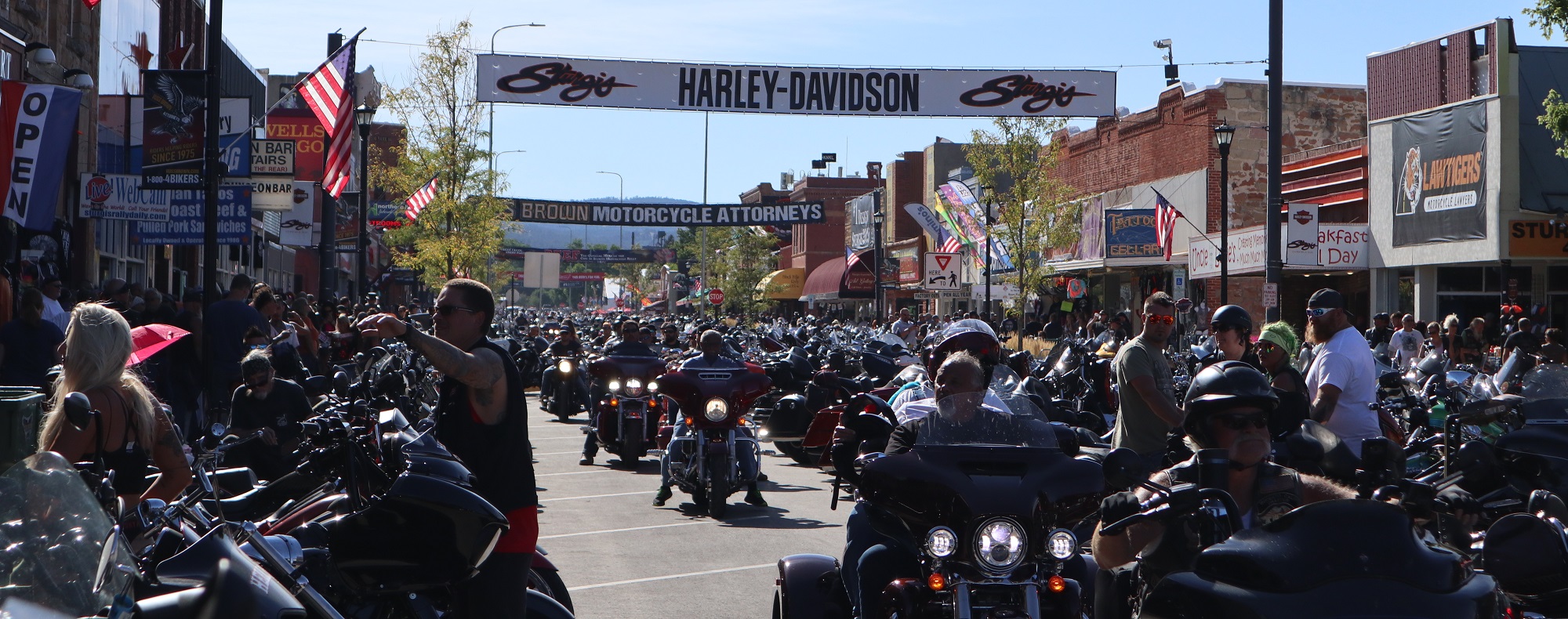It’s quite rare for motorcycling in any form to get nationwide attention in the U.S. mainstream news media, but that’s what happened this past weekend. And it’s not surprising, since the 80th Sturgis Motorcycle Rally has been described — probably accurately — as the largest mass gathering in the United States since the coronavirus pandemic began.
That’s why news media ranging from Fox News to CNN to NPR, from The New York Times to the Washington Times to the Los Angeles Times, and just about every other major news organization, have published reports on Sturgis, an event that would normally not merit a mention from any of them. The rally this year is being presented as a sort of national experiment. If 200,000 or so people converge from points all over the country, party together and then go home, will they spread the virus far and wide? Will they leave behind an outbreak that will overload the health care facilities of rural South Dakota? Or will it amount to nothing?
Even knowing how many people go to Sturgis is a difficult fact to pin down, in any year, because it is such a large event spread over a wide area. To get a firsthand account, I talked to my J&P Cycles colleague Patrick Garvin. As a Sturgis resident, he only has to walk out his door to get an idea of what’s happening, at least in the town of Sturgis itself. He said attendance appears to be down from previous years, but not dramatically so. Crowds are still filling Main Street, though the traffic is not backed up quite as far and the mechanics working on visitors’ motorcycles are just busy, instead of insanely slammed with work.
“I think if you took someone from the 2017 rally and dropped them on Main Street today, they’d know they’re at a Sturgis Rally. They’d probably just think it would be one of the slower days,” said Garvin.
Two differences between past years and 2020 are the absence of large corporations and top-level musical acts at this year’s rally.
“Sturgis has turned into somewhat of a concert weekend for some people,” Garvin said. Among the headline acts last year were Snoop Dogg and Toby Keith. Willie Nelson was supposed to perform this year. But with major concert tours canceled, the big-name Sturgis appearances were also canceled. Concerts are still happening, but with far lesser known acts.
Companies such as Dunlop, Indian and, most of all, Harley-Davidson, the official sponsor of the rally for the next 70 years, are usually quite visible at the rally, but not this year. Harley-Davidson said it would not send any employees to Sturgis because of its current policies on corporate travel and would support the rally at a distance.

Smaller crowds than most years, but still the biggest gathering taking place anywhere in the United States. Photo by Patrick Garvin.
To many non-riders, this is motorcycling
The part of this that makes many of us grimace is that the scenes from Sturgis will define motorcycling in the minds of many people who have no other exposure to it. Of course forming a perception of motorcycling based on Sturgis would be like forming your definition of music based on hearing one Boston Symphony Orchestra concert. Or one Lil Wayne concert. In other words, you’re seeing only a slice of a much broader and more diverse picture. Unfortunately, crowds of people ignoring a pandemic will be the most widely disseminated images related to motorcycling in the United States in 2020.
One of the questions that had to be answered in most of the general news media coverage was why the rally wasn’t canceled this year. Basically, since the rally is not really owned by any single entity, it is virtually impossible to call it off. People just show up, so both the city of Sturgis and many businesses were left with the option of choosing not to prepare or participate, but knowing the crowds — at least some of them ‐ were coming anyway.
The demographic that attends Sturgis skews toward people who are most likely to believe the pandemic has been exaggerated — and, ironically, it also skews toward people more likely to die if they do get the virus. So the real question is what happens next — whether the Sturgis Motorcycle Rally goes back to being an event that doesn’t make the news, or whether it makes more news in 2020. Given the lack of tracing, the rally may fade without more notoriety even if thousands of people do return home from Sturgis with the coronavirus and spread it further. And it may depend on what happens in Sturgis and the other small towns in the region after the crowds are gone.
The national experiment is underway, on two wheels, and we may never even know how it turns out.

I think Harley is going to lose some legacy customers.
This is insane but the problem is we’ll never know the real results because people will go back to their homes in 40 different states and when some of the end up in the hospital it will show up as a case there, not in South Dakota, which was the real source of the virus. Then everyone who went to Sturgis and didn’t die will say see, it’s all a hoax.
That’s true, but if the crowds leave and there’s an outbreak in Sturgis or somewhere else nearby, the locals will know where it came from. So many people rely on the rally for their livelihood, they’re willing to take a lot of risks, however.